Marina Jones always knew something wasn’t right.
At just 7 years old, she remembers struggling to keep up during laps at gymnastics class. Sometimes, she’d purposely show up late just to avoid the physically demanding warmups. By middle school, things had only gotten worse. In gym class, she found herself completely unable to run. When she finally tried to speak up, she was dismissed.
“I remember going up to my gym teacher and saying, ‘I know this sounds weird, but I feel dizzy and out of breath every time I try to run. I feel like I’m going to pass out,’ ” Jones tells PEOPLE exclusively over Zoom. “He brought over another teacher, and they both laughed. They said, ‘Even people with heart problems can run laps — you’re being dramatic.’ ”
When she raised the same concerns with family and friends, they chalked it up to being out of shape. “You just need to exercise more,” they told her. But the more she tried, the worse things got.
Embarrassed and confused, Jones began to internalize the criticism. “I thought, ‘Maybe I’m just out of shape. Maybe I just hate sports,’ ” she says.
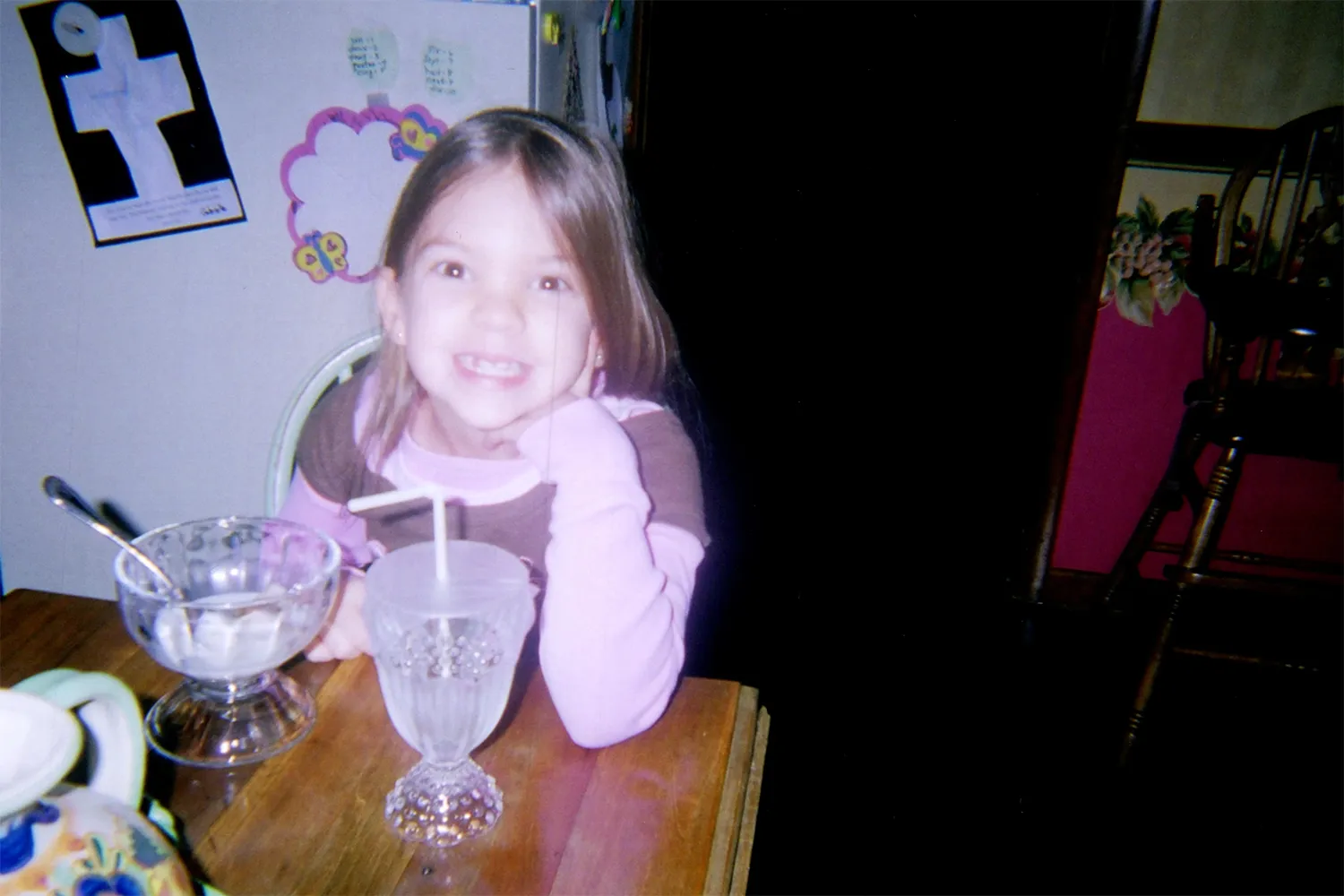
By 15, new symptoms began to appear — including debilitating migraines. She visited walk-in clinics hoping for answers, but was repeatedly brushed off. Doctors blamed low iron or told her to eat more.
Meanwhile, the breathlessness and dizziness only intensified. She began avoiding physical activity altogether. If her friends made plans that involved walking — even just around the mall — she’d find an excuse not to go.
“I isolated myself… I didn’t know what was wrong. I just knew something was,” she says. “Everyone thought I was being dramatic, so I kept it to myself. I even tried researching my symptoms, but all I ever found was asthma — and it didn’t feel like that’s what I had.”
Still, she pushed through until her body gave out.
During a family visit to her sister’s college in Georgia, Jones was walking around campus with her mom, younger sister and her sister’s boyfriend when they came to a steep hill. She instantly felt that familiar fear. Walking uphill always left her lightheaded and breathless, but she didn’t want to say anything, especially in front of her sister’s boyfriend. So, she continued walking.
“Everyone was telling me to hurry up, and then… I don’t really remember what happened. I just woke up on the sidewalk. I had completely passed out,” she says.
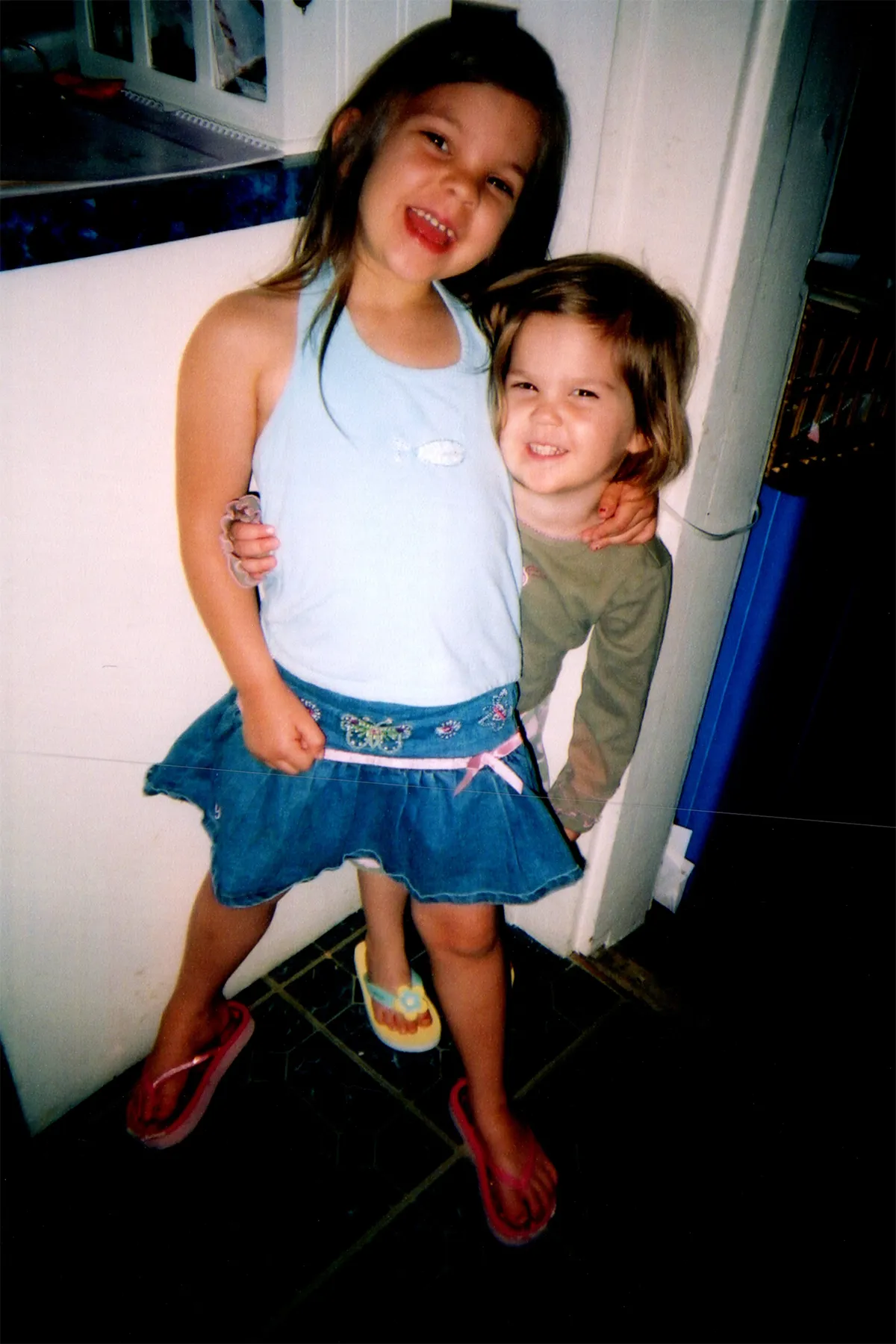
When she came to, her heart was racing, and a small crowd had gathered. She remembers her sister’s boyfriend asking if she knew her name or where she was.
Despite the scare, Jones insisted she was fine and kept walking. But her mom was shaken. She called Marina’s longtime primary care doctor and said, “She just passed out. We really need to figure out what’s going on.”
At the appointment, Jones opened up for the first time about everything she’d been hiding: how she avoided stairs and hills, how she distanced herself from friends and even faked an injury to get out of gym class.
To her surprise, the doctor took her seriously.
“He told me, ‘If you’re doing all of that just to avoid stairs, that’s more embarrassing than just walking up the stairs. There’s no way you’re making this up. Something’s really going on.’ ”
He immediately ordered a chest X-ray. When the results came back, they revealed that Jones’ heart was nearly double its normal size, enlarged from years of struggling to pump oxygen properly.
It was her first real answer, but it was only the beginning.
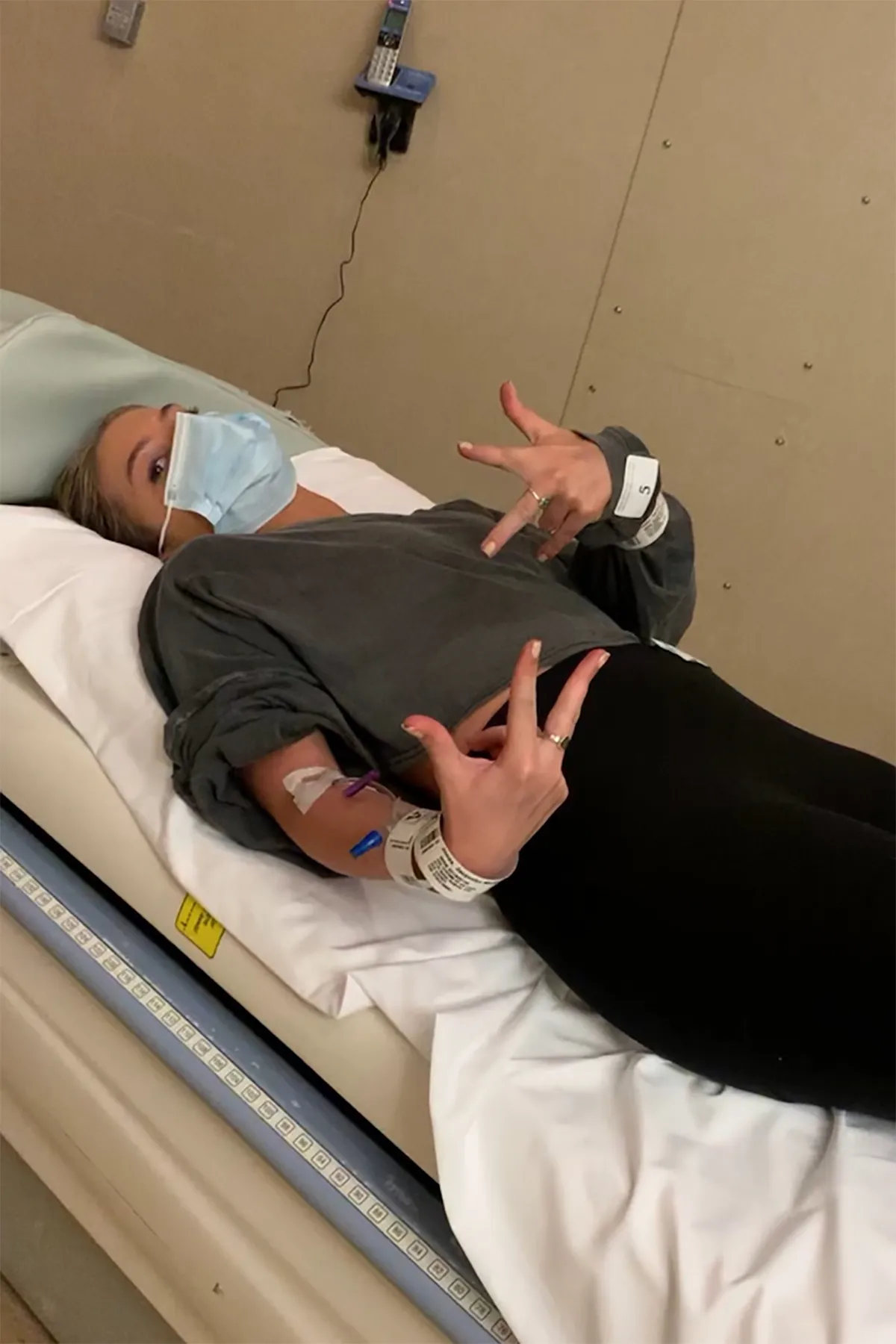
A few days later, her mom asked her to go for a drive. “I was like, ‘Why? That’s so weird,’ ” Jones recalls. As they cruised through the neighborhood, she sensed something was off. “I remember thinking, ‘What’s going on? Is something wrong with someone in our family?’ ”
That’s when her mom broke the news. The doctor had called. There was a name for what was happening: pulmonary hypertension, and it was serious.
According to the Mayo Clinic, pulmonary hypertension is a type of high blood pressure that affects the arteries in the lungs and the right side of the heart. Over time, it can lead to heart failure.
“I had never heard of it, so I was like, ‘Okay?’ But just by her tone, I could tell something was really wrong,” Jones says. “I asked, ‘Does it affect my lifespan?’ And she was like, ‘Well…’ That’s when I knew.”
Despite her mom’s warning not to Google it, she did. “The first thing I saw was: ‘Life expectancy: five years after diagnosis.’ And I was 16.”
The moment was overwhelming. “I was shocked,” she says. “But I also remember feeling awkward, like things suddenly got way too serious.”
Trying to break the tension, she cracked a joke. “I said, ‘Well, if I’m gonna die in five years, you guys are gonna have to do everything I want now!’ ” she says. “She did not laugh. Like, it was not funny to her, obviously.”
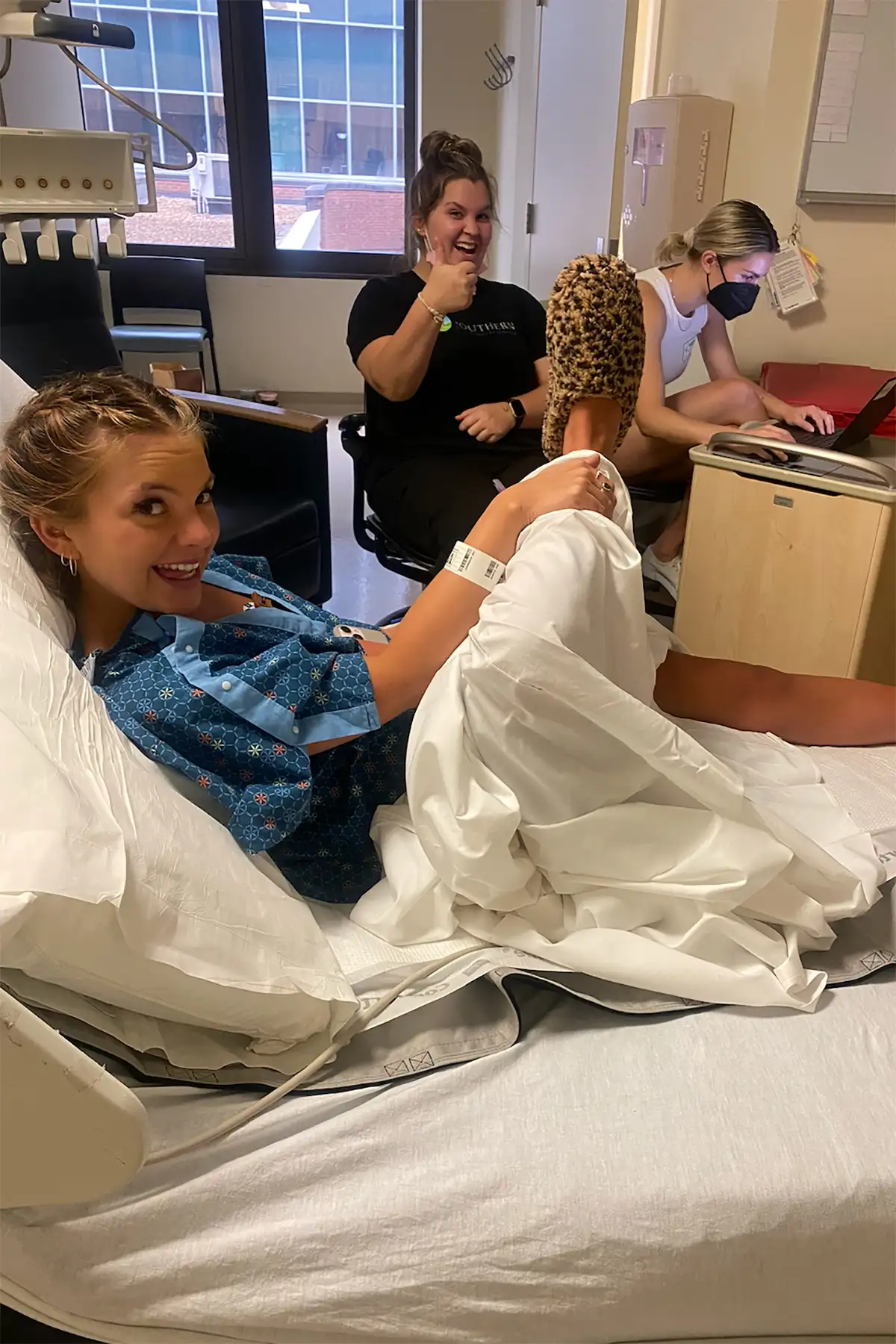
Back at the doctor’s office, the reality of her diagnosis began to sink in.
“Doctors started going over all the medications I’d need, everything I’d have to do, and it was a lot, especially for a teenager,” Jones says. “But in a weird way, it also felt like a relief. Like, I wasn’t just being dramatic. I wasn’t lazy. There really was something wrong.”
Among the first treatments she began was a continuous medication pump called Remodulin, a flip-phone-sized device that delivered medicine 24/7 through a small needle inserted under the skin.
Jones wore the pump on her arm or side, but the side effects were brutal — physically and emotionally. Even with her high pain tolerance, changing the needle was excruciating. Her arm would swell so badly it couldn’t be touched.
“It was always uncomfortable,” she says. “I was pretty much in pain 24/7.”
The medication also changed her appearance. Her face became constantly red and blotchy, like a persistent rash or rosacea across her face, neck and chest. But one restriction hurt more than the rest: no swimming with the pump.
“That was devastating,” Jones says. “I’ve always loved the beach and ocean. It sounds small, but that was my happy place.”
@elvislover1973 I had to cut out so many little tangents I went on LOL there’s so much lore we might need a pt 2 but ily thank u for being here!!! Xoxoxo
♬ original sound - marina
Jones remained on the pump throughout high school and did her best to adjust. In addition to managing her daily medications and sleeping with an oxygen machine, she worked hard to appear as normal as possible. She avoided stairs, took breaks in the nurse’s office and pushed herself to keep up with her classmates.
Behind the scenes, though, Jones was exhausted — physically and emotionally — and spent much of her time in and out of the hospital. Throughout it all, one thing lingered in the back of her mind: doctors had warned her early on that a lung transplant might eventually be necessary.
At the time, the idea felt too far-fetched — too extreme — to truly consider. She pushed it aside, focusing instead on surviving the day-to-day.
But after six years of managing her condition, things started to unravel. While only 22 and attending esthetician school, even walking from her car to the classroom became a struggle.
“I didn’t want to talk about what was going on, so I’d go straight to the bathroom, check my oxygen — it’d be in the 70s — catch my breath, and then go to class,” she says. “I was exhausted all the time. I realized, ‘If I don’t do something soon, I’m not going to make it.’ ”
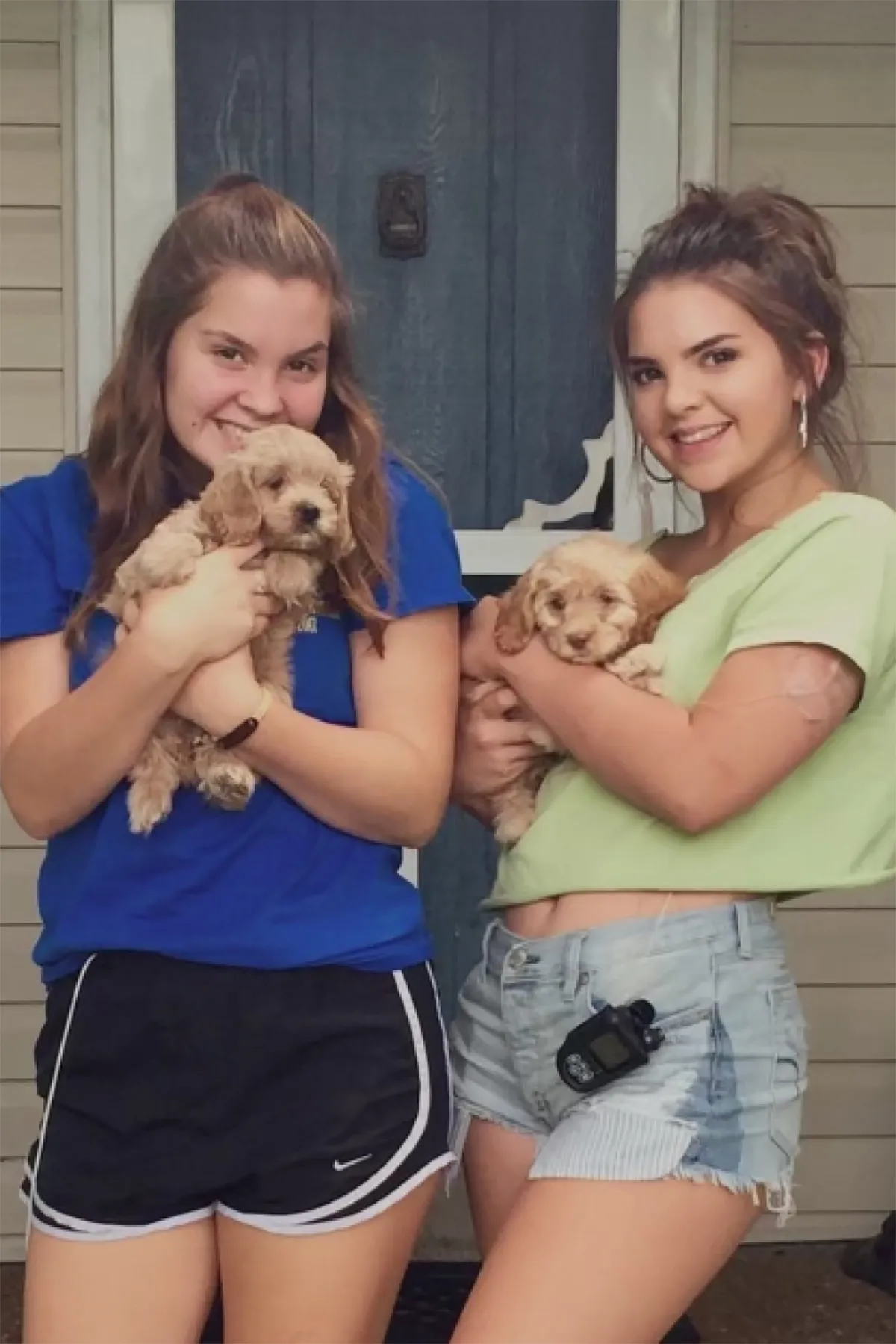
Still, the reality didn’t hit until she went through what she thought would be a routine heart echo, a test she underwent every six months.
“The technician kept moving the wand around, clicking buttons, not saying much. Then he said, ‘One second, I’m going to get the doctor,’ ” she recalls. “I looked at my mom and said, ‘That doesn’t sound good.’ ”
The doctor came in, examined the scan, and delivered the news bluntly: “Do you know you’re in heart failure?” she recalls being told.
“I was like, ‘No… thanks for that information,’” she remembers responding. “I asked, ‘What do we do now?’ And he said, ‘You’re going to have to forget about school for now. This is really serious.’ ”
At her next appointment, her longtime pulmonologist didn’t mince words either. “He just looked at me and said, ‘Well, it’s time. If you want the transplant, we need to start the process,’ ” she says. Despite her fear, Jones knew there wasn’t much choice. “I realized if I didn’t say yes, I could die,” she says.
What followed was a whirlwind of tests to qualify for the transplant list: dental exams, bloodwork, allergy screenings and psychological evaluations. The process took nearly two months, but eventually, Jones was officially approved.
Then came the waiting.
“They told me, ‘You’ll get a call at any time — day or night — and you just have to be ready to go,’ ” she recalls.
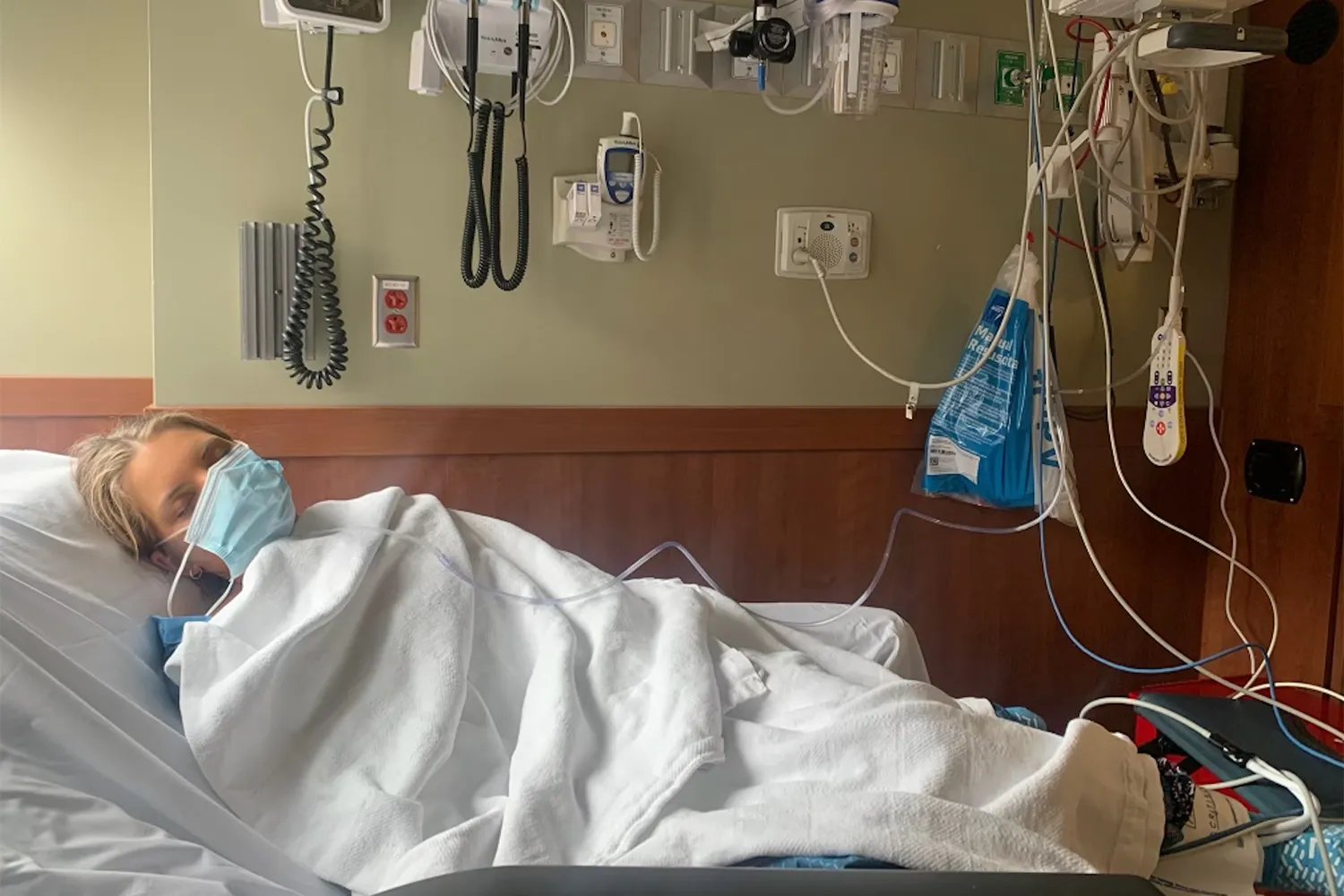
Two weeks later, the phone rang. She was at her apartment, which she shares with her little sister, when the transplant coordinator called. “They said, ‘We think we have a match, but we’re not 100% sure. You need to come in just in case.’ ”
Jones quickly packed a small overnight bag and headed to the hospital. Once checked in, the wait began, and dragged on, and on and on. “I was so thirsty,” she remembers, explaining how she was unable to eat or drink in preparation for the potential surgery.
Finally, after 13 hours, Jones was informed the lungs weren’t viable. The donor had complications before passing, and the lungs couldn’t be used. So she had to go home. But a week later, another message came, this time in the middle of the night.
“My nurse texted me around midnight and said, ‘Hey, I think we’ve actually got lungs this time. I’m not going to make you come in yet, but be ready in the morning,’ ” Jones says.
Hours later, at 8 a.m., the phone rang, just as planned. “The nurse said it so casually: ‘Hey Marina, do you wanna come down and get some new lungs?’ ” Jones laughs. “I was like, ‘Um… sure?’ ”
So, Jones and her mom headed straight to the hospital. Unlike the first time, everything moved quickly.
“We figured we’d be waiting for hours again,” she says. “But suddenly, the surgeons walked in and started wheeling my bed out. My mom asked, ‘Wait — the surgery’s now?’ And they said, ‘Yep, we’re ready.’ ”
There was barely time to process what was happening.
“I texted my dad and cousin like, ‘They’re taking me back now — love you!’ And then they just wheeled me away,” Jones recalls. “It all happened so fast, it didn’t feel real… but I felt very calm and at peace.”
@elvislover1973 I be remembering sometimes fr #doublelungtransplant ♬ original sound - Funny Sound Effects
The last thing she remembers is being rolled into the cold, sterile operating room, where surgeons performed an eight-hour double lung transplant. Because her heart had been so damaged from years of oxygen deprivation, doctors placed her on ECMO, a machine that kept her blood circulating and oxygenated during the procedure.
After surgery, Jones remained in the hospital for nearly two weeks, but the first few days were the hardest.
“I had this idea in my head that the moment I woke up, I’d take this amazing first breath, that I’d feel the air fill my lungs and everything would be better,” she says. “But that’s not what happened.”
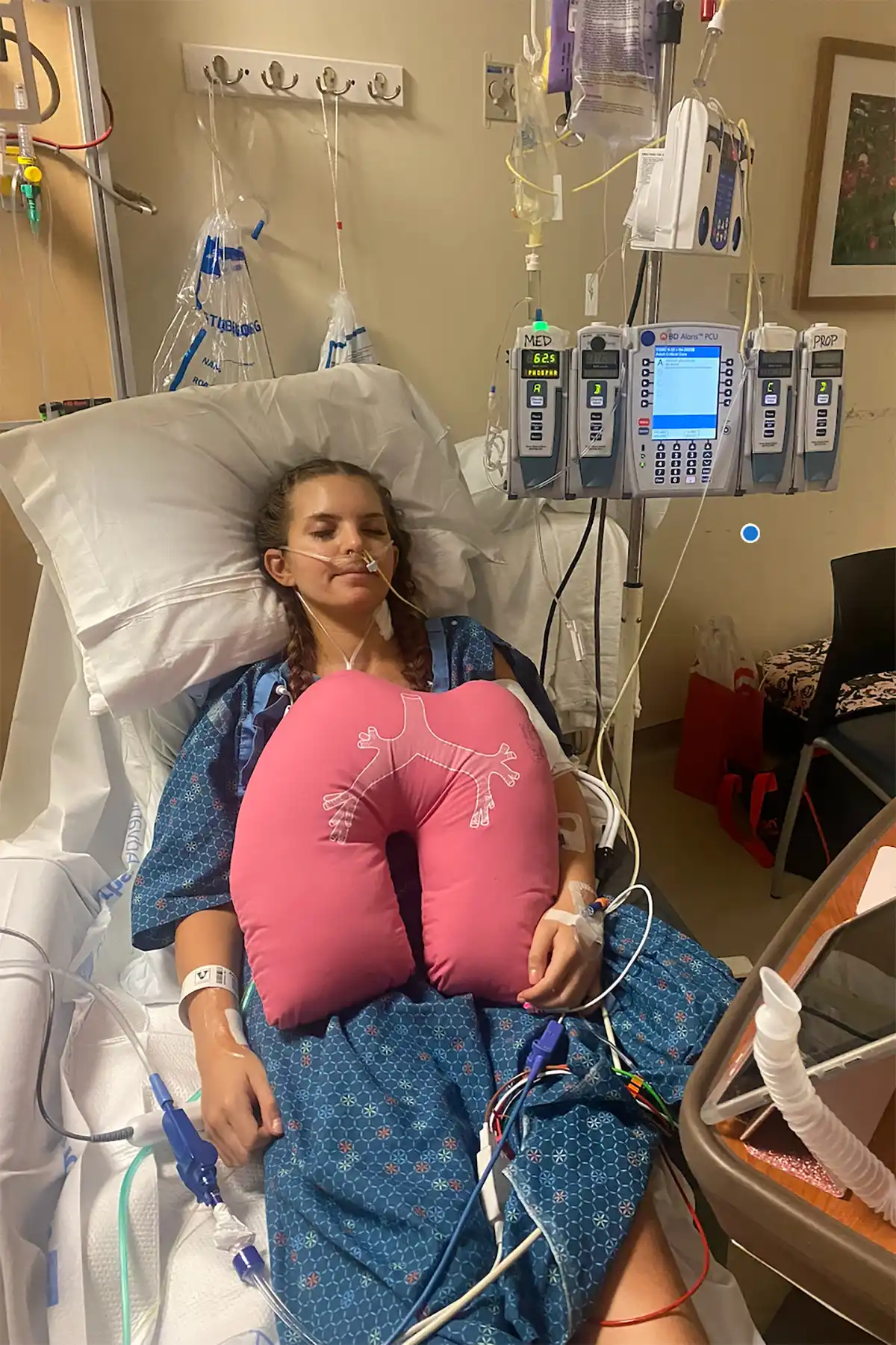
Instead, she woke up still on a ventilator, groggy from medication and in excruciating pain.
“My red blood cell count was too low for them to do an epidural, which they usually use to manage the pain,” she adds. “So when I woke up, I felt like my chest was on fire. Like all my ribs were broken. It was unbearable.”
Her older sister was by her side, the only one there at the time. “My mom had gone home just to shower; she’d been sleeping in the hospital chair day and night,” Jones says. “Honestly, I’m glad no one else saw me like that. It was terrifying.”
The room was full of nurses trying to help her breathe. Alarms beeped and voices urged her to cough to clear fluid from her lungs, but the pain made it impossible.
“I couldn’t do it,” she says. “I was trying so hard to take a deep enough breath to cough, but every inhale was agony. They kept yelling — not in a mean way, they were just trying to encourage me — but it was overwhelming. I couldn’t move. I couldn’t talk. I just couldn’t do it.”
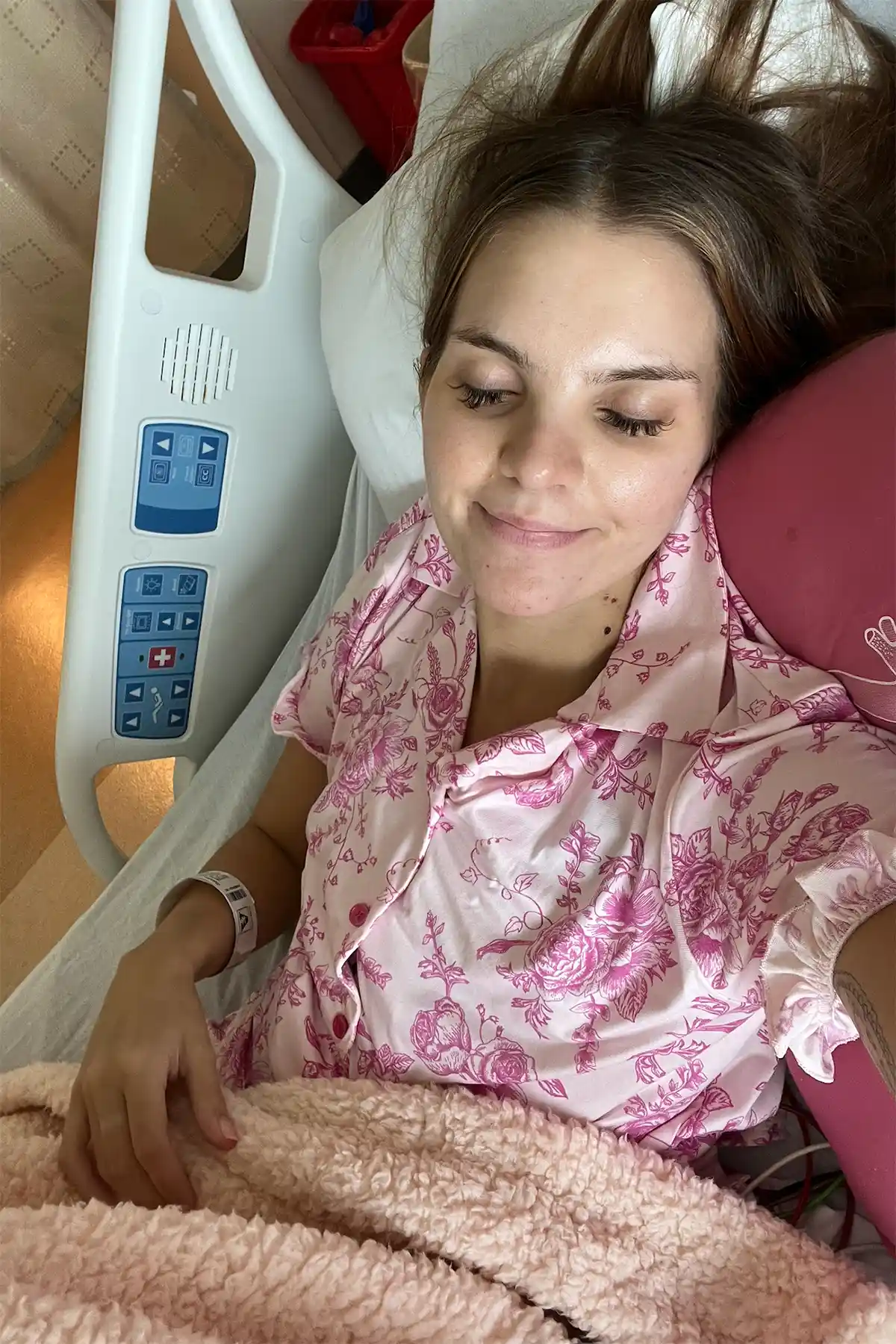
Eventually, the team made the decision to put her back on the ventilator.
“I heard someone say, ‘This isn’t going to work, we’ll have to sedate her again.’ And then everything went dark.”
The next time she woke up, her hands were tied to the hospital bed, a safety measure to keep her from accidentally pulling out her breathing tube.
“I completely freaked out,” she says. “I couldn’t move. I couldn’t speak. All I could do was move my eyes. I didn’t know where I was or what was going on. That’s something that still sticks with me. I have a hard time falling asleep sometimes because I keep thinking about waking up like that, totally trapped.”
Over the next few days, Jones remained on the ventilator, battling not just the physical toll of surgery, but something more disorienting: ICU delirium, a condition that causes confusion, hallucinations and memory issues.
“My hallucinations were awful,” she says. “They felt so real, and they were all really scary. I didn’t know what was happening. I didn’t know what was real. It was a really rough couple of days.”
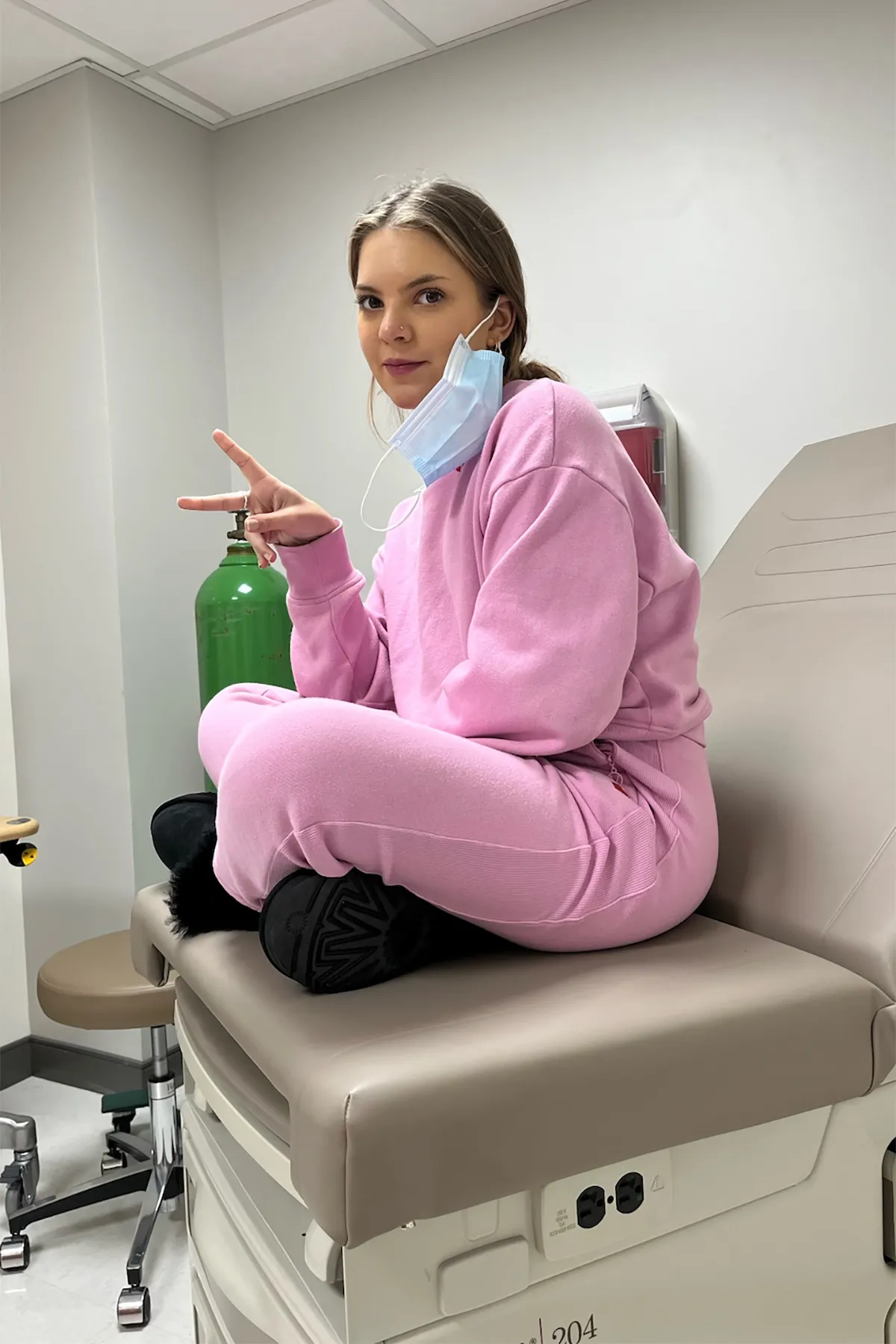
But slowly, things began to shift.
She was taken off the ventilator, moved into a new room and placed on a feeding tube. Bit by bit, she relearned how to do everything: breathing on her own, sitting up, walking, talking and performing basic daily tasks. Eventually, when she could walk on her own, she was discharged from the hospital. But while she could take steps independently, the work was far from over.
She went home with 20 to 30 different medications and a long list of vitals to track — oxygen levels, blood pressure, heart rate, breathing — all to be measured twice a day, every day. Her sister, just four years older at 26, became her rock during those first few overwhelming months.
“I’m not naturally the most organized person — I’m forgetful, I lose track of things,” she says with a laugh. “So my older sister kind of ‘momed’ me. She really stepped in and took control of the schedule and helped me come up with a medication system. My mom helped a lot, too.”
For the first full year after surgery, Jones was basically quarantined. She could see family — but only from a distance — and wasn’t allowed in public spaces.
“That was hard,” she admits. “I missed traveling, the beach, Target, Costco, just going out to eat. After about three months, I was finally able to eat outdoors at restaurants, as long as it wasn’t crowded. But for the most part, I stayed home. I was terrified of getting sick.”
@elvislover1973 Replying to @Princess(Billie’s version) lung transplant rules (there’s def more but idk where my binder is) #doublelungtransplant ♬ original sound - marina
That year of isolation, however, marked the beginning of something unexpected.
With nowhere to go and plenty of time on her hands, Jones started driving around — sometimes to grab coffee, sometimes just to clear her head. During those drives, she began recording videos on her phone and posting them to TikTok.
“At first, I was nervous about how I looked,” she says. “One of the side effects of the transplant meds was ‘moon face’ — my face would swell up a lot — and I was a little embarrassed. But I started making videos anyway, just talking about what it was really like being sick or going through a transplant.”
“I never used to talk about any of this, not publicly, not even with people close to me,” Jones admits. “But once I started posting, I began getting messages from others with pulmonary hypertension, people who had transplants or were waiting for one. It was really cool, and it helped me so much, especially during such an isolating time.”
What began as a creative outlet quickly became something much more meaningful. As she shared more, her following grew. Since then, she’s amassed nearly 650,000 followers.
“I didn’t want to just be the girl who had surgery,” she adds. “I’m obviously grateful for my transplant, but I didn’t want that to be the only thing people saw. I felt like I had more to say — more personality than just being someone who’s sick.”
So she found a balance. She journaled to clarify how she wanted to show up online and mixed in videos about her daily life — grabbing coffee, running errands or simply talking to the camera with humor and honesty.
“It became a space where I could be real,” she says. “It helped me heal and gave everything I went through more purpose.”
View this post on Instagram
Looking back, Jones says she wishes she could talk to her pre-transplant self — the version of her who was terrified of the surgery and all the rules that would follow.
“I really thought it would change everything about my life,” she says. “I imagined being bored, stuck inside, totally sheltered… like I wouldn’t have a real life anymore.”
But now, on the other side, she sees it differently.
“Before, my mind was full of what I couldn’t do and everything I wished I could,” she says. “If someone invited me out, I’d panic — would we have to walk far? Climb stairs? Park too far away? I was constantly worried and often had to leave early because I just couldn’t keep up.”
“Now, I’m a different person,” she adds. “Those thoughts don’t even cross my mind anymore. Sometimes I have to sit and really remind myself how much has changed.”
Still, there are medical realities she can’t ignore. The biggest concern after any transplant is rejection. She’ll be on medications to prevent her body from rejecting the lungs for the rest of her life, along with antifungals and antibacterials to help protect her immune system, which is now intentionally suppressed.
“My immune system’s basically on vacation,” she jokes. “So I have to be careful, I’m more prone to infections, and even skin cancer, which means sunscreen and staying out of the sun are non-negotiable.”
Her daily routine also includes lifestyle precautions. She follows what she calls a “pregnancy diet,” so no raw foods, carefully washed fruits and vegetables, no lettuce at restaurants, no sushi.
But despite the ongoing care, what stands out most are the moments of freedom she never thought she’d get to experience.
@elvislover1973 I can’t believe it’s been 2 years I am the luckiest girl on earth #doublelungtransplant #transplant ♬ sonido original - B.sound
“There have been so many times I’ve stopped and thought, ‘This is really my life? This is insane,’ ” she says. “Growing up, I always thought I’d be different — that something would be wrong with me. Even before I knew what it was, I assumed I’d always be facing some kind of limitation.”
“And yeah, there have been hard moments. I still have restrictions. I still go to the doctor. But life is so good now,” she adds.
She smiles. “I just traveled alone for the first time. I never thought I’d do that. I used to bring oxygen everywhere, constantly worried about heart attacks or worse.”
“But I spent a month alone in the Cayman Islands. It was incredible. I still can’t believe it happened.”